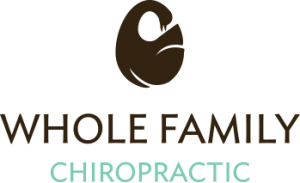Walk into almost any doctor’s office today and the pattern is the same: your child is struggling, a professional listens for a few minutes, and then comes the label. Autism. ADHD. Anxiety. Sensory Processing Disorder. The prescription pad comes out, and you’re sent home with a diagnosis and medication.
The problem? No one stops to ask why.
No one digs into the root cause. No one talks about what’s actually happening in your child’s body or nervous system that’s leading to these struggles. Even in the “holistic” world, it often plays out the same way—just with a different set of labels: MTHFR, PANS, COMT, Lyme. The names change, but the outcome is the same: parents are left feeling like their child is permanently “stuck” with that condition for life.
Here’s the truth: labels don’t calm meltdowns. Labels don’t fix sleep. Labels don’t help your child regulate emotions or digest food better. Labels don’t heal.
What parents really want to know—and what rarely gets addressed in conventional care—is this: what is really going on at the root of my child’s struggles?
The Benefits (and Limits) of a Label
Let’s be fair: labels do serve a purpose. In some situations, they provide real benefits:
-
Access to services. A diagnosis may unlock speech therapy, OT, or specialized education at school.
-
Insurance coverage. Families can get coverage for equipment, therapies, or programs they otherwise couldn’t afford.
-
Validation. For many parents, a label brings relief—proof that their instincts were right. They no longer need to justify their concerns to teachers or relatives.
-
Support networks. With a diagnosis, parents can find communities, resources, and structured pathways to help navigate daily challenges.
But there’s another side to this story—and it’s one parents need to watch out for.
The Hidden Costs of Labels
-
Identity Shifts. When a child internalizes a diagnosis as part of who they are—“I’m broken, I’m ADHD, I’m anxious”—it can shape how they see themselves for years.
-
Victim Mindset. Parents and children alike can fall into the belief that nothing can change. That the condition defines them. That it’s permanent.
-
Medication-Only Thinking. Too often, the label leads to one treatment path: drugs. While medication can reduce symptoms, it rarely addresses the underlying dysfunction—and can mask the need to dig deeper.
-
Narrow Lenses of Care. Once the diagnosis is set, families are often steered down a single, rigid path. The possibility of healing outside that box is never explored.
A Different Way Forward: Going Beyond the Label
Here’s where things shift. Instead of stopping at the diagnosis, the real work lies in asking: why is my child struggling in the first place?
Your child’s brain and nervous system control everything in their body—sleep, digestion, immune function, focus, emotions, and sensory processing. When this system is connected and balanced, kids thrive. But when there’s stress or interference in that system, symptoms start showing up:
-
Trouble sleeping
-
Chronic infections
-
Anxiety and meltdowns
-
Focus and attention struggles
-
Digestive challenges
Over time, these symptoms get bundled together and categorized into a label. But the symptoms themselves are signals. They’re the body’s way of saying, something is off in the connection between the brain and the body.
Restoring Connection = Unlocking Healing
Instead of chasing symptoms, the goal should be to restore neurological function and resilience.
-
When the nervous system is balanced, the body regulates emotions better.
-
When the brain-to-body connection is strong, digestion, immunity, and sleep normalize.
-
When the fight-or-flight response calms, kids can focus, learn, and grow without being stuck in survival mode.
This is not about ignoring the label. It’s about going upstream—finding and addressing the root cause—so your child can thrive beyond the label.
Why This Matters Now
According to the CDC, 40% of children in the U.S. now have at least one chronic health condition. That’s nearly one in two kids—an alarming statistic that should raise a red flag for every parent. And prescriptions for children, particularly psychiatric medications, have increased by 50–200% in the last 20 years.
We can’t medicate our way out of this crisis. What families need is not just another label, but a pathway to true healing.
Moving Forward
If your child has a diagnosis, use it for what it’s worth—access to resources, support, and validation. But don’t stop there. Dig deeper. Ask the questions the system isn’t asking:
-
Why is my child’s nervous system stressed?
-
What’s blocking their brain-body connection?
-
How can we help their body function the way it was designed to?
When you start looking at the root, you open the door to real change—change that goes beyond suppressing symptoms and instead restores your child’s ability to heal, grow, and thrive.
👉 If this resonates with you, explore our resources, check out how neurological scans can reveal what’s happening in your child’s system, or schedule a quick consult to get answers. Because your child deserves more than a label.


